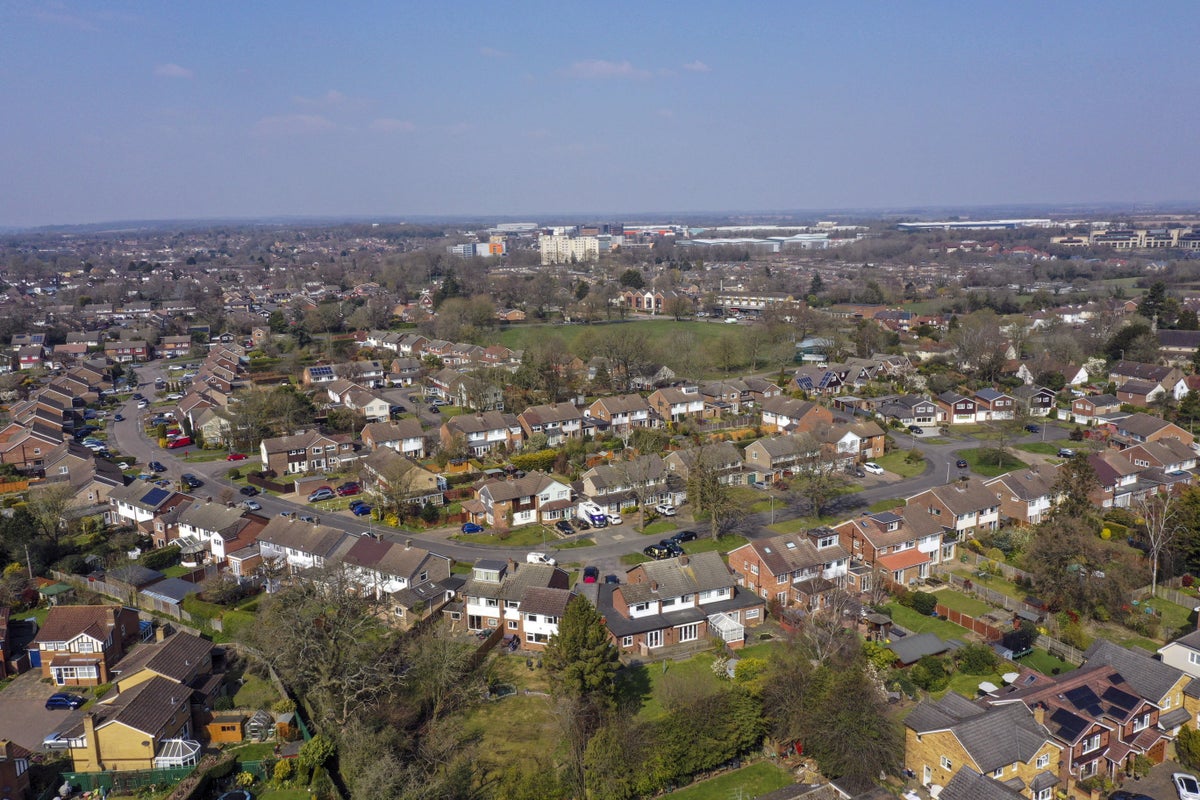
Green shoots may be appearing in the housing market, some experts have suggested, as Bank of England figures showed home-buyer mortgage approvals edged up for the first time in six months in February.
Some 43,500 mortgages were approved for house purchase in February, up from 39,600 in January.
This marked the first monthly increase since August 2022, according to the Bank’s Money and Credit report.
The “effective” interest rate – the actual interest rate typically paid – on newly drawn mortgages increased to 4.24% in February.
Karen Noye, a mortgage expert at Quilter, said: “Some green shoots might be appearing as, in February, approvals for house purchases showed a rebound, rising to 43,500 in February from 39,600 in January…
It’s clear that home-buyers are cautiously returning back to the market in early 2023— Karen Noye, Quilter
“However, the effective interest rate on newly drawn mortgages increased by 36 basis points to 4.24% in February, making borrowing more expensive for potential home-owners and will likely still continue to mean approvals are depressed as people adopt a wait-and-see approach, at least in the short term.
“However, it’s clear that home-buyers are cautiously returning back to the market in early 2023 after the huge shocks at the back end of last year made many put their house hunts on ice. How this all feeds through to house prices is yet to be seen.”
Jason Tebb, chief executive of property search website OnTheMarket.com, said: “The uptick in approvals for house purchases for the first time since August 2022 suggests that the uncertainty around the mini-budget fallout, rising interest rates and inflation has calmed to an extent.
“Looking forward, consumers may feel less confident in the short term with another rate rise this month and inflation ticking up again, but even in challenging markets there are those who need to move.”
Households borrowed an additional £1.4 billion in consumer credit in February.
The annual growth rate for all consumer credit – which includes borrowing on credit cards, overdrafts and personal loans – increased slightly from 7.5% in January to 7.7% in February, marking the highest rate since November 2018.
The annual growth rate for credit card borrowing slowed slightly to 13.1% in February, while for other forms of consumer credit the growth rate accelerated.
We continue to think that many people will prefer to save more when their real incomes start to recover in the second half of this year, rather than spend all of the windfall— Samuel Tombs, Pantheon Macroeconomics
Households also deposited an additional £1.6 billion with banks and building societies in February, compared with £3.3 billion in January.
Net flows of money into accounts where balances are not immediately accessible without penalty remained strong, but this was largely offset by flows out of accounts where balances can be immediately accessed.
During February, households also deposited £2.0 billion into National Savings and Investment (NS&I) accounts, meaning the combined net flow into bank, building society and NS&I accounts in February was £3.6 billion, increasing from £3.3 billion in January.
Savings giant NS&I is backed by the Treasury, meaning deposits held with it are 100% secure. In general, savers with money in UK-authorised banks and building societies will be compensated by a limit of up to £85,000, if their provider goes bust.
Meanwhile, non-financial UK businesses withdrew a net £5.0 billion of deposits from banks and building societies, compared with a net withdrawal of £20.3 billion in January.
Financial information website Moneyfacts also released figures on Wednesday, showing the average easy-access Isa rate on the market has breached 2%, standing at 2.01% in March, up from 1.85% in February.
The average Isa for which notice has to be given for withdrawals was 2.61% in March, up from 2.49% in February.
Those savers comparing short-term fixed Isas will also find the average one-year fixed Isa rose to 3.56%, its highest point since December 2008— Rachel Springall, Moneyfacts
Rachel Springall, a finance expert at Moneyfacts, said: “The average easy-access Isa rate rose month on month to 2.01% and stands at its highest point since February 2009.
“Those savers comparing short-term fixed Isas will also find the average one-year fixed Isa rose to 3.56%, its highest point since December 2008.”
She said competition between providers and Bank of England base rate increases have pushed savings rates up.
Samuel Tombs, chief UK economist at Pantheon Macroeconomics, said: “Households showed further signs in February of drawing on the savings they accumulated during the pandemic to sustain their consumption.”
But he said the large flow of deposits into accounts which are not intended to be accessed instantly “suggests that many households do not intend to draw on their remaining savings to finance additional consumption soon”.
He added: “We continue to think that many people will prefer to save more when their real incomes start to recover in the second half of this year, rather than spend all of the windfall.”







